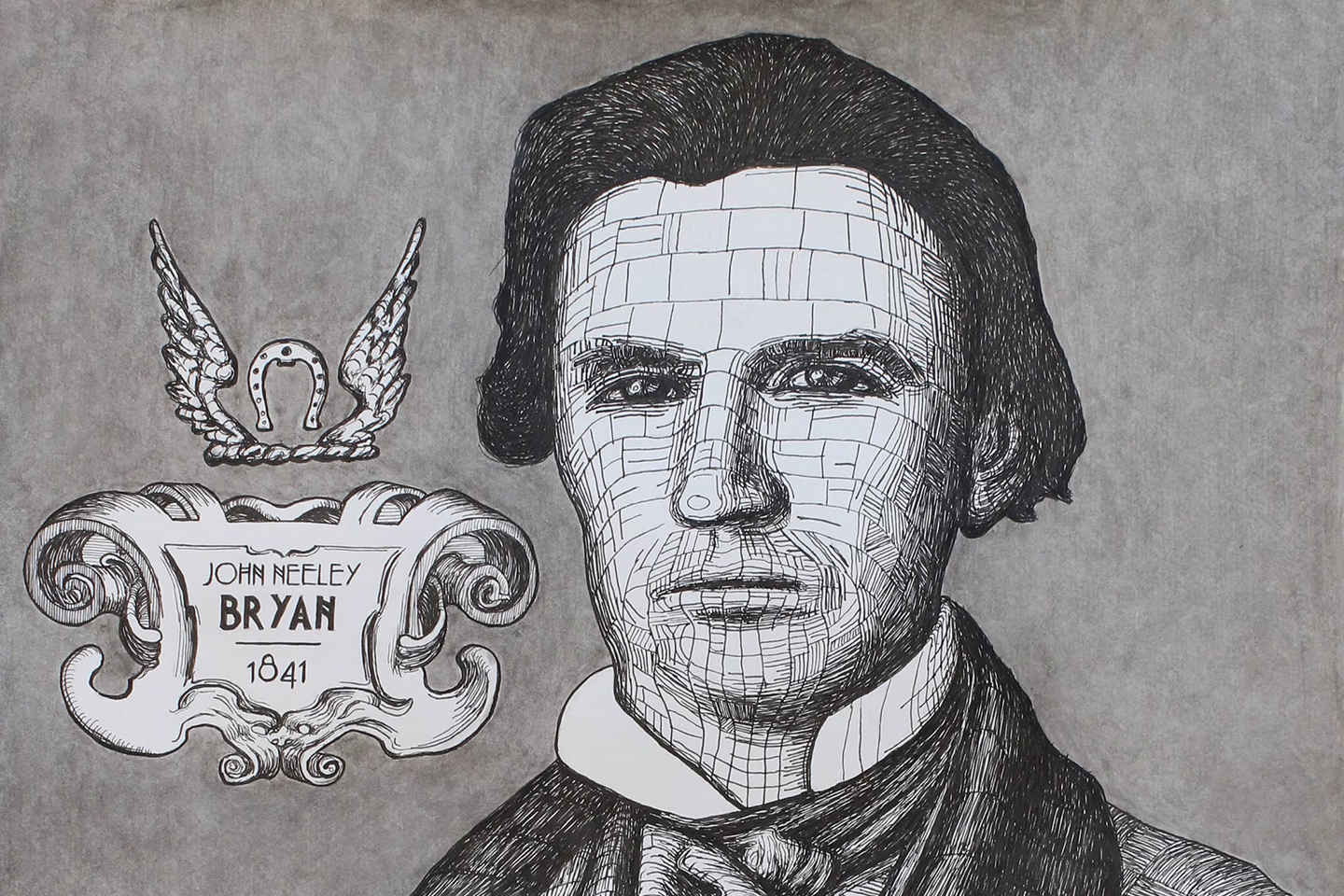A Brief History of Dallas, Texas
by W. R. Conger, Director - Local History and Genealogical Society
Local History and Genealogical Society, Volume 9, Number 2, June 1963

In 1841, President Lamar of the Republic of Texas created the Henry Peters Colony Grant. Dallas County, nine hundred square miles, was to be carved from this grant. The future Dallas County was at that time divided by the Trinity River into two counties. The part east of the river was Nacogdoches County with Robertson County on the west side of the river. There were a few settlers in the general area, but true records are scarce and legends difficult to reconcile with fact. The present day Commerce Street was part of a trail leading from the north-east to the south of Texas, which had been surveyed by a team of United States surveyors. During the 1841 - 1843 period, Preston's trail or road from the Red River to Austin was surveyed and adopted by the Republic of Texas as a military road to improve north to south communications and afford protection to the settlers against marauding bands of Indians.
With a small surveying crew, Warren Angus Ferris, Deputy Surveyor for Nacogdoches County, came up the Three Forks of the Trinity River and began the first surveys of the land that is now the city of Dallas. Mr. Ferris, starting in October, 1840, worked in this area for eighteen months, running several surveys on land received by veterans for their service in the war for Texas independence. Two of these veterans with large tracts of land were John Grigsby and Thomas Lagow, each receiving a league and labor. Their land was to become almost the center of the downtown section of the city of Dallas. These surveys were recorded in the Nacogdoches County records in November, 1841.
Also, in November, 1841, John Neely Bryan, a hardy young Tennessean, traveled from the Red River to the Trinity River. Mr. Bryan built what was probably a combination dugout and log hut in the neighborhood of the present day implement and wholesale district, close to the aforementioned junction of Commerce Street and the river.
Soon, other pioneers from Bird's Fort, located on the West Branch of the Trinity River, joined Mr. Bryan. The first to arrive was Captain Maybelle Gilbert and family traveling down the river in dugout canoes carved from cottonwood trees. By deduction it is assumed that Mrs. Gilbert was the first white woman to establish residence in this area.
The John Beeman family, including their nine children, were the next to move from Bird's Fort bringing with them the first horses and wagons to this part of the county. They settled a few miles northeast of Mr. Bryan's home. Later, Mr. Bryan was able to borrow a team of horses and a wagon to make a trip to replenish his supply of trade goods. Upon returning, he found his home washed away by a flood. It was quite likely after this time that he built the 10' x 12' cabin reported by Col. John C. McCoy in 1845. On February 26th, 1843, John Bryan married Margaret Beeman. From their small home this family carried on a trading business, opened a post office, with mail once every two weeks to Bonham, and conducted county, state and district political affairs.
Mr. Ferris, In making another trip up the Trinity after 1841, reported visiting with Col. John Neely Bryan and mentioned five or six families living at some distance from the Bryans. He also wrote about: "the fine field of corn the Gilbert's had across the river."
After building his home, Mr. Bryan filed a claim to the six hundred and forty acres of land lying between the Trinity River and the western edge of the Grigsby league.
In 1845, a small band of men came from the state capitol to investigate the Henry Peters Colony Grant. Col. John C. McCoy was the surveyor for this expedition. When Texas became a state in 1845, Dallas County was created out of Nacogdoches and Robertson counties. Col. McCoy, having decided to stay in this county, accepted John Neely Bryan's offer to become the first County Clerk. A few years later, on the corner of Commerce and Lamar Streets, Col. McCoy was to build the first frame house in Dallas.
There is some controversy over who helped Mr. Bryan lay out the first streets on his property in 1848. It may have been Mr. J. P. Dumas, a surveyor, known to have been in the county at that time. It is unlikely to have been Mr. Ferris, since he had just married in 1847 in Anderson County and later moved to the White Rock area prior to his survey of the Dallas County border in 1850.
Many families continued to move into the general area of what was one day to become the largest city in the United States without an outlet to a sea. Alexander Cockrell, from across the river in the future Oak Cliff section, built in Dallas, a sawmill, a ferry across the Trinity, and later a bridge. He was to eventually purchase all of the land still owned by John Neely Bryan.
Dallas became a town on February 2nd, 1856. The Incorporation papers were drawn by Col. John C. McCoy and Col. Nat M. Burford rode horseback to Austin, Texas to present the Articles to the Texas Legislature. Statistics: one-half mile square - population over four hundred people - ninety-six votes cast in the first election - Dr. Samuel B. Pryor elected the first Mayor. Dallas now had a Main Street and some of the names on the buildings were: Patterson & Smith; Alexanders; Stanley & Durgan, General Merchants; Elliot & Dean, Groceries and Wearing Apparel; Sayre & Thomas, Apothecaries and Drug Supplies; McCoy & Nicholson and John J. Good, Attorneys at Law; and Doctor Samuel B. Pryor, Physician and Surgeon.
In the early days there was a trail crossing a river, next a trading cabin, then wagon yards. Wheat grew easily; so mills were built, and flour exchanged for cut lumber from the forests in the eastern part of the state. The sound of squeaking, ungreased wheels on the axles of carts loaded with trade goods from Mexico, could be heard for miles. A signal for the local merchants to check their wares and beware of the many ways they could win or lose in a trade with the sharp traders from far away cities. The people of Dallas knew their job: they kept their profits at home and expanded their firms. Later, freight train whistles signaled the warnings, and business improved - more people were needed - they came - they looked - they stayed. Then "King Cotton" moved in. More railroads were built, more roads constructed - trucks - airplanes - wars - then the city became the banking and insurance capital of the southwest. But, there in secluded nooks, in specially zoned areas, were the warehouses. Most major companies in the United States and some from foreign countires now maintain a representative, an office, a showroom, or a warehouse in the city. Today the citizens are still traders, just as in the beginning - first there was one, later four hundred, now in 1963, almost one million persons.

